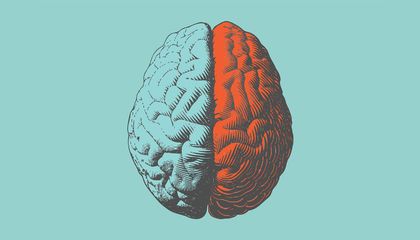Monday, 17 April 2023
Functional asymmetry in the brain

.
Today I’d like to draw your attention to the fact that even though there are two of every structure in the brain – one in the left hemisphere and the other in the right – in many cases, starting with the cortex, the paired structures in the two hemispheres do not have exactly the same functions.
On the contrary, the brain’s two hemispheres have many functional asymmetries, which means that they do not do exactly the same things. I have discussed these asymmetries in two earlier posts (here and here) to explain why people cannot really have a “right-brain personality ” or a “left-brain personality”. That said, the reason that the vast majority of people are right-handed, for example, is that their left hemispheres provide better control over the movements of their right hands than their right hemispheres do over those of their left hands. And although in the majority of right-handed people, the left hemisphere also handles the syntactical aspect of language, the right hemisphere contributes to their understanding of metaphors, irony, context and the intonation of sentences. But the situation is not always exactly the opposite in left-handed people. This whole question of the connection between handedness, language and the functions of the two hemispheres is very complicated; I have tried to explain it a bit at two points on this website (here and here).
Spatial orientation and regulation of emotions are two other functions that show a degree of lateralization, meaning that the brain’s two hemispheres do not manage either one in exactly the same way. This complementarity between the two hemispheres is seen in many non-human species, from bees to orcas, which suggests that it may afford certain evolutionary advantages. Possible advantages that have been identified include using the space in the brain as efficiently as possible, increasing the brain’s processing speed by favouring shorter circuits within a single hemisphere, and increasing its cognitive capabilities by enabling parallel processing of various tasks and functions.
From Thought to Language | Comments Closed







